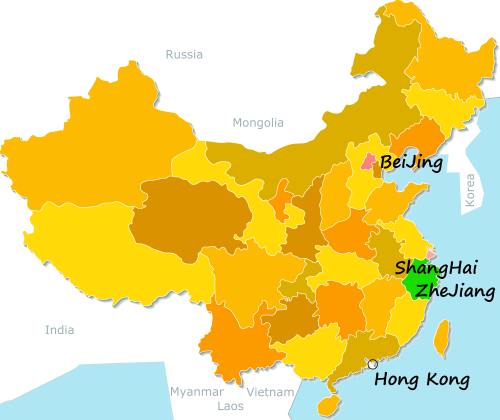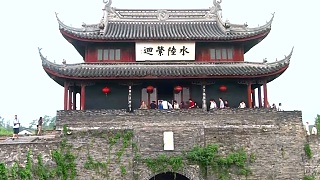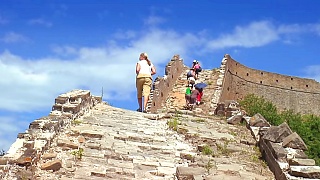Top 30 places to visit in and around HangZhou :
- West Lake (西湖, Xī Hú): Explore the scenic beauty of this UNESCO World Heritage Site with boat rides and leisurely strolls around the lake.
- Lingyin Temple (灵隐寺, Língyǐn Sì): Visit one of the most famous Buddhist temples in China, known for its ancient architecture and serene surroundings.
- Qinghefang Ancient Street (清河坊古街, Qīnghéfāng Gǔjiē): Wander through this historic street lined with traditional shops, teahouses, and street food vendors.
- Longjing Tea Plantation (龙井茶园, Lóngjǐng Cháyuán): Experience tea culture and enjoy a scenic hike through the picturesque tea fields.
- Hefang Street (河坊街, Héfāng Jiē): Discover a lively pedestrian street filled with shops selling local crafts, snacks, and souvenirs.
- China National Tea Museum (中国茶叶博物馆, Zhōngguó Cháyè Bówùguǎn): Learn about the history and culture of tea in China through interactive exhibits and demonstrations.
- Xixi Wetland Park (西溪湿地, Xīxī Shīdì): Enjoy nature walks, boat rides, and birdwatching in this scenic wetland park.
- Huqingyu Tang Chinese Medicine Museum (胡庆余堂药店博物馆, Húqìngyútáng Yàodiàn Bówùguǎn): Explore the history of traditional Chinese medicine and herbal remedies.
- Song Dynasty Town (宋城, Sòng Chéng): Step back in time to the Song Dynasty era and experience traditional architecture, performances, and cultural activities.
- National Silk Museum (中国丝绸博物馆, Zhōngguó Sīchóu Bówùguǎn): Learn about the ancient art of silk production and admire exquisite silk artifacts.
- Hangzhou Zoo (杭州动物园, Hángzhōu Dòngwùyuán): Spend a day with the family exploring the diverse animal exhibits and enjoying fun activities.
- Thousand Island Lake (千岛湖, Qiāndǎo Hú): Take a scenic boat cruise on this vast reservoir surrounded by lush green mountains.
- Six Harmonies Pagoda (六和塔, Liùhé Tǎ): Climb to the top of this ancient pagoda for panoramic views of the Qiantang River and surrounding landscapes.
- China Academy of Art (中国美术学院, Zhōngguó Měishù Xuéyuàn): Visit the campus and galleries of one of China's leading art institutions.
- Hangzhou Botanical Garden (杭州植物园, Hángzhōu Zhíwùyuán): Explore the diverse plant collections and scenic landscapes of this botanical garden.
- Grand Canal (大运河, Dà Yùnhé): Take a boat tour or stroll along the historic Grand Canal, a UNESCO World Heritage Site dating back over 1,000 years.
- China National Silk Museum (中国丝绸博物馆, Zhōngguó Sīchóu Bówùguǎn): Learn about the ancient art of silk production and admire exquisite silk artifacts.
- Hangzhou Paradise (杭州乐园, Hángzhōu Lèyuán): Have a thrilling day of fun and excitement with rides, shows, and attractions for all ages.
- Xiling Seal Engravers Society (西泠印社, Xī Líng Yìn Shè): Discover the art of seal engraving and calligraphy at this historic society and museum.
- Hangzhou Safari Park (杭州野生动物世界, Hángzhōu Yěshēng Dòngwù Shìjiè): Get up close and personal with exotic animals from around the world in this sprawling safari park.
- Hangzhou Wetland Science Museum (杭州湿地科技馆, Hángzhōu Shīdì Kējìguǎn): Learn about wetland ecosystems and environmental conservation through interactive exhibits and educational programs.
Hangzhou, located in eastern China's Zhejiang province, is renowned for its picturesque West Lake, traditional tea culture, and historic sites. Here's a guide for tourists visiting Hangzhou:
West Lake and Scenic Areas:
West Lake (Xi Hu): This UNESCO World Heritage Site is the centerpiece of Hangzhou's natural beauty, with its serene waters, pagodas, gardens, and surrounding hills. Visitors can take boat cruises, stroll along the lakeside paths, or rent bicycles to explore the area.
Leifeng Pagoda: Situated on the southern shore of West Lake, this historic pagoda offers panoramic views of the lake and the city skyline.
Lingyin Temple (Temple of the Soul's Retreat): One of the most important Buddhist temples in China, Lingyin Temple features ancient rock carvings, serene courtyards, and a large statue of Buddha.
Xixi Wetland Park: Explore the tranquil waterways, traditional villages, and lush greenery of this scenic wetland park, located on the outskirts of Hangzhou.
Tea Culture:
Longjing (Dragon Well) Tea Plantations: Hangzhou is famous for producing Longjing tea, one of China's most prized green teas. Visitors can tour the tea plantations in the nearby hills, learn about the tea-making process, and sample freshly brewed Longjing tea.
National Tea Museum: Learn about the history, cultivation, and cultural significance of tea in China at this informative museum located on the outskirts of Hangzhou.
Historic and Cultural Sites:
Six Harmonies Pagoda (Liuhe Pagoda): This ancient pagoda offers panoramic views of the Qiantang River and the surrounding countryside. It also houses a small museum showcasing Buddhist artifacts.
Hefang Street (Qinghefang Ancient Street): Stroll along this historic street lined with traditional shops, teahouses, and snack stalls selling local delicacies and handicrafts.
China National Silk Museum: Discover the art of silk production and the history of the silk trade in China at this museum, which features exhibits on silk weaving, dyeing techniques, and cultural artifacts.
Modern Attractions:
Hangzhou Grand Canal: Take a boat cruise along the Grand Canal, the world's longest and oldest canal, to admire the historic architecture and bustling waterfront scenes.
Hangzhou CBD (Central Business District): Explore the modern side of Hangzhou with its skyscrapers, shopping malls, and vibrant nightlife.
Practical Tips:
Transportation: Hangzhou has an extensive public transportation network, including buses, subways, and taxis. Bicycles and electric scooters are also popular options for getting around the city.
Weather: Hangzhou has a humid subtropical climate with hot, humid summers and mild, damp winters. Spring and autumn are the best times to visit when the weather is pleasant and the landscapes are at their most beautiful.
Language: Mandarin Chinese is the official language, but English may not be widely spoken outside of tourist areas. It's helpful to learn a few basic phrases or carry a translation app.
Hangzhou's blend of natural beauty, cultural heritage, and modern amenities makes it a captivating destination for tourists. Whether you're exploring historic sites, indulging in tea culture, or simply enjoying the tranquility of West Lake, Hangzhou offers a memorable experience for visitors of all interests.

 30 places to visit in and around HangZhou, ZheJiang province
30 places to visit in and around HangZhou, ZheJiang province

















